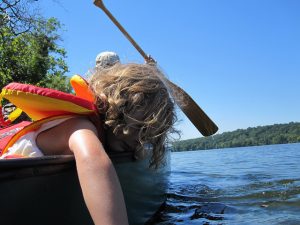About the Basin, June, 16 2017
We’re switching gears for this week’s About the Basin. Instead of extolling the virtues of a nature reserve or state park, we’ll be travelling down a short stream just south of Washington, D.C. called Piscataway Creek and discovering all the treasures it has to offer.
Beginning just north of Rosaryville, Maryland, the Piscataway runs just 4.5 miles long. The headwaters pass through Piscataway Creek Stream Valley Park. This park is difficult to access and has few trails. However, if you are in the area, stop by Cosca Regional Park. The main feature of this park is Lake Cosca, which runs into Butler Branch, a tributary of Piscataway Creek. Boat rentals and overnight camping are available in this 690-acre park near Clinton, Md.
About the time Piscataway Creek flows under Indian Head Highway (Route 210), it opens-up into an embayment that provides a variety of recreational opportunities, including hiking, boating, fishing, and educational adventures. The Piscataway Creek Trail can be found on the north side of the embayment. The highlight of this park is a short, easy hike with beautiful views of the river. Just west of the trail is Fort Washington Marina which offers two boat ramps and lots of parking.
Beyond the recreational opportunities, this area is rich with history. The mouth of the river is directly across from George Washington’s Mount Vernon and is largely protected because of its view of this historic piece of land. But long before George Washington dug a hoe into the ground, the Native Americans considered the area a special place. Many organizations work to preserve the history of this creek and its embayment.
On the west side of the marina is Fort Washington Park, one of the few forts still in its original form along the east coast of the United States. An important Potomac River stronghold, this fort showcases how it has adapted to the advances in artillery, ships, and warfare over the past two centuries.
Across the river from the fort is National Colonial Farm at Piscataway Park. In addition to a boat ramp, hiking trails, arboretum, and forest restoration projects, the park hosts a living history farm from the colonial period. Visit the farm to learn what it was like to live as a middle-class family before the American revolution (spoiler alert: they didn’t have wifi!). Join the farm this Saturday (and every Saturday) for Green History Saturday, a look at environmental issues and their relation to contemporary sustainability.
Just west of National Colonial Farm is Alice Ferguson Foundation’s Hard Bargain Farm, an environmental center focused on sustainable agriculture and cultural heritage. Most of the farm’s programs are for local students and teachers, but the center occasionally opens to the public for special events.
Looking to combine water activities and history? As part of Potomac Riverkeeper Network’s Riverpalooza lineup of summer activities, many will load into canoes and kayaks for a Piscataway Creek Paddle to learn about the history of this beautiful creek this Saturday, June 17. Find information on this event and many other fun activities on ICPRB’s Calendar of Events.

